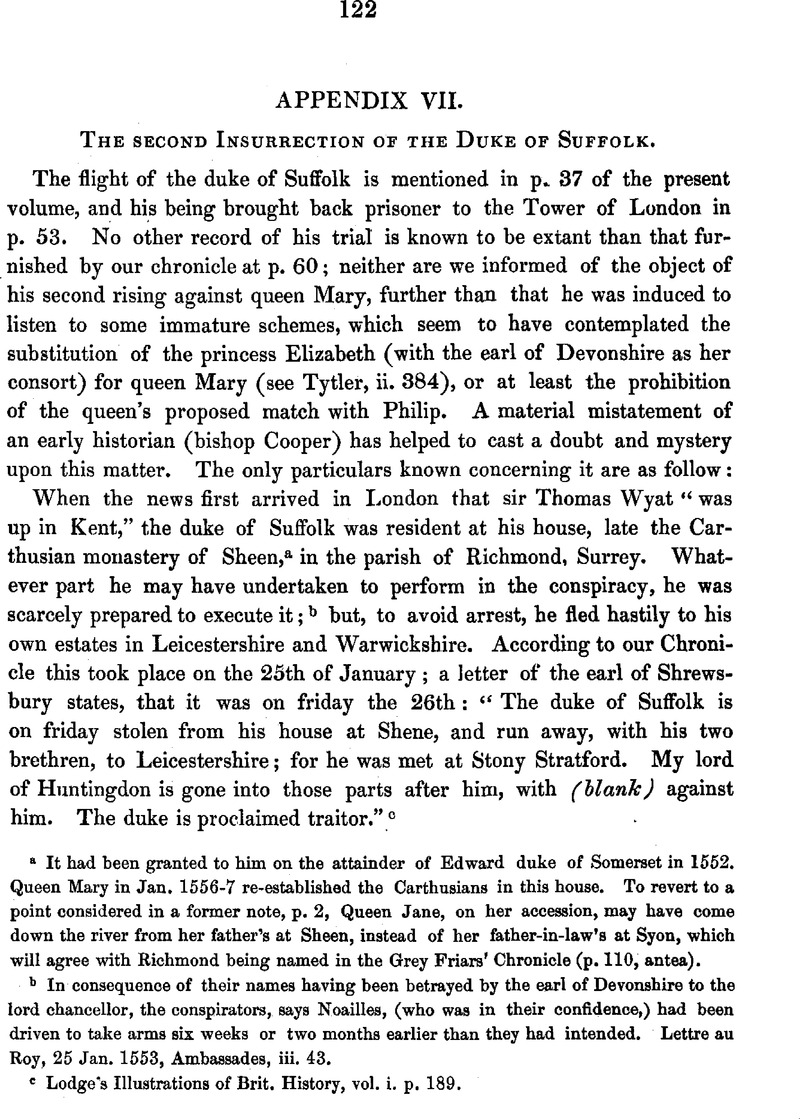No CrossRef data available.
Article contents
VII. The second Insurrection of the Duke of Suffolk
Published online by Cambridge University Press: 23 February 2010
Abstract

- Type
- Appendix
- Information
- Copyright
- Copyright © Royal Historical Society 1850
References
page 122 note a It had been granted to him on the attainder of Edward duke of Somerset in 1552. Queen Mary in Jan. 1556–7 re-established the Carthusians in this house. To revert to a point considered in a former note, p. 2, Queen Jane, on her accession, may have come down the river from her father's at Sheen, instead of her father-in-law's at Syon, which will agree with Richmond being named in the Grey Friars' Chronicle (p. 110, antea).
page 122 note b In consequence of their names having been betrayed by the earl of Devonshire to the lord chancellor, the conspirators, says Noailles, (who was in their confidence,) had been driven to take arms six weeks or two months earlier than they had intended. Lettre au Roy, 25 Jan. 1553, Ambassades, iii. 43.
page 122 note c Lodge's Illustrations of Brit. History, vol. i. p. 189.
page 123 note a Some writers, notwithstanding, have carelessly or injudiciously preferred the story of Cooper. It was followed by De Thou, and other foreign historians; and so some credit has continued to be given to it, even by our native writers; among others by Mr. Lodge, in his memoirs both of lady Jane Grey and the duke of Suffolk, and in his Illustrations of Brit. History, i. 138; and Miss Strickland, Lives of the Queens, v. 330.
page 123 note b Thomas Davynport. Hist, of Leicestershire, i. 394.
page 123 note c One of these was Melton Mowbray; see an allusion to the circumstance in Richard Troughton's narrative, Archæologia, xxiii. 48.
page 125 note a For the communication of these I am indebted to Mr. William Reader, late of Coventry, a member of the Camden Society.
page 126 note a Lodge's Illustrations of British History, i. 190.
page 126 note b History of Shrewsbury, by Owen and Blakeway, i. 351.




